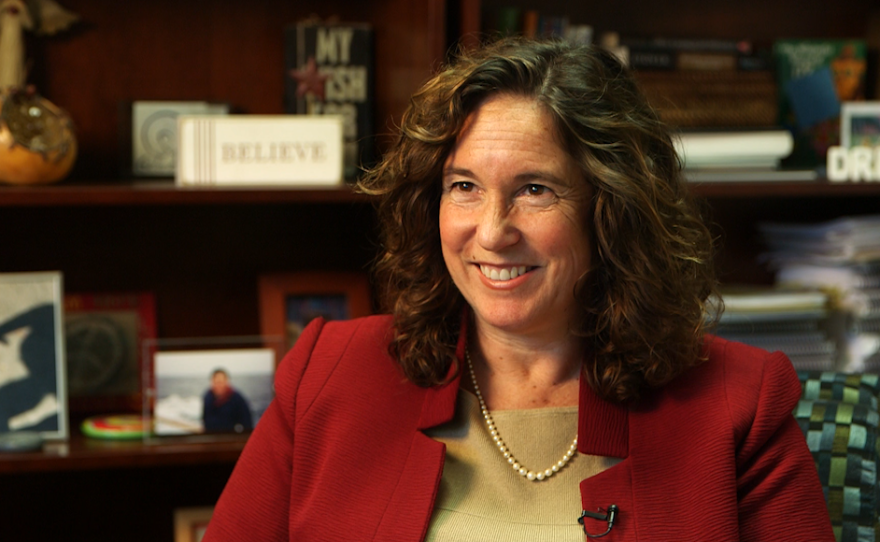The San Diego Unified School District surveyed its 11th- and 12th-graders this year and found nearly 2,000 students who would do well in advanced placement courses but haven't enrolled. The high school classes offer college credit and a competitive edge.
That gap is more pronounced among Latinos and African-Americans. A third of eligible Latinos opted out and nearly half of eligible African-Americans are not enrolled.
San Diego Unified's AP Gap
| Enrolled in AP | Eligible but not enrolled | |
| White and Asian | 3,623 | 395 |
| Latino | 2,019 | 1,128 |
| African American | 319 | 304 |
| Other | 130 | 64 |
The survey found the students didn't know enough about the classes or were afraid they'd fail.
Superintendent Cindy Marten said the data hints at one reason the students may lack confidence.
"We found out that 89 percent of students across the district wanted to go to college. We asked our staff, and staff estimated that only 76 percent of our students have aspirations to go to college," Marten said. "So that was a little bit of a disconnect that might answer that question of why they aren't enrolling. Well, do they have people who believe in them?"
Marten said pep talks from teachers or counselors have already helped schools fill their AP ranks. The surveys asked students to identify their most-trusted adult on campus and, in many cases, principals have asked those adults to reassure and recruit students.
Schools have also focused on improving outreach. Serra High School, for instance, started a #NoMoreGaps campaign on campus and asked black and Latino students who are currently enrolled in AP classes to answer questions from prospective students and their parents.

It's a problem schools throughout the country are trying to solve. The Education Trust and Equal Opportunity Schools estimate 640,000 low-income students and students of color qualify for AP classes but haven't enrolled or lack access altogether.
Marten said she met with San Diego principals Thursday to ensure they're offering enough AP courses next year.
"We need to make sure that we've designed access for all of our students, no matter their background," Marten said, "and that we as a system have not limited opportunities, we've actually expanded opportunities."






